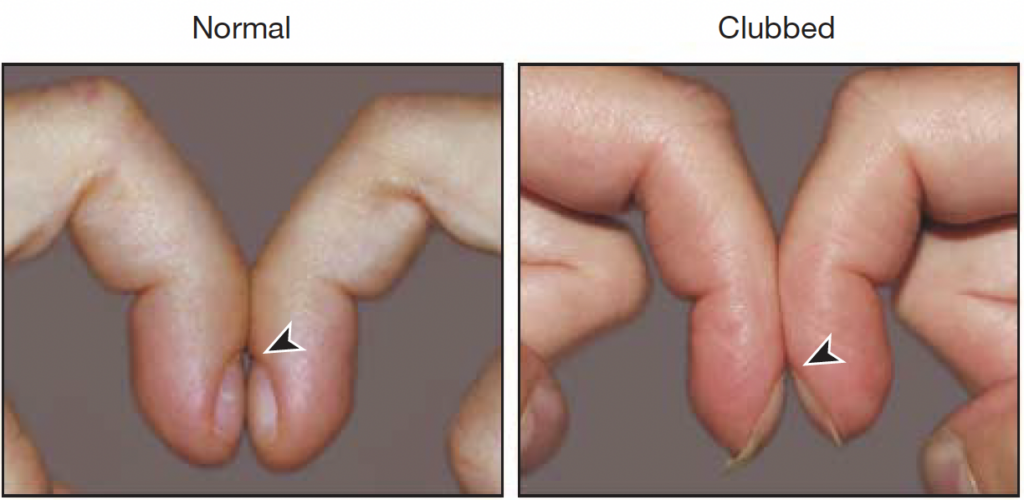Schamroth sign
Description
Schamroth sign. Simple sign to determine the presence of finger clubbing.
Place the terminal phalanges of similar fingers back to back and look for the small diamond-shaped window (Schamroth window) outlined by the bases of nail beds and nails.
One of the earliest signs of clubbing is obliteration of this ‘window‘.
History of the Schamroth sign
1976, after watching his own clubbing come and go during one such episode of endocarditis, Leo Schamroth (1924-1988) suggested that clinicians place the terminal phalanges of similar fingers back to back (especially ring fingers) and look for a small diamond-shaped window outlined by the bases of nail beds and nails.
Early clubbing with ‘filling in’ of the nail bed is often difficult to evaluate if the finger is viewed in isolation. I found that the assessment of my own clubbing was facilitated by the simple expediency of placing together the dorsal surfaces of the terminal phalanges of similar fingers – particularly the ring fingers. In the normal individual, a distinct aperture or ‘window’, usually diamond-shaped, is formed at the bases of the nail beds (arrow Fig. I, A). The earliest sign of clubbing is obliteration of this ‘window’ (Fig. I, B).
Schamroth 1976
- Schamroth window: the diamond-shaped gap formed when two opposing fingers are placed back to back
- Schamroth sign: occurs in finger clubbing, when this window is obliterated and the distal angle formed by the two nails becomes wider
Schamroth angle: prominent distal angle between the ends of the nails
Another aspect of clubbing which becomes evident from this manoeuvre is the formation of a prominent distal angle between the ends of the nails. This angle is normally minimal, virtually non-existent, and does not extend more than half-way up the nail bed (Fig. I, A). Clubbing manifests with an abnormally wide and deep angle which extends more than half-way up the finger nails (arrow in Fig. 1, B).
Schamroth 1976
2010 – Pallares-Sanmartin et al used the interphalangeal depth ratio as the diagnostic standard and demonstrated that the Schamroth sign had a sensitivity of 77-87%, specificity of 90%, positive likelihood ratio of 8, and negative likelihood ratio of 0.2.

Associated Persons
- Leo Schamroth (1924-1988)
Alternative names
- Schamroth’s sign; Schamroth’s window
References
Historical references
- Schamroth L. Personal experience. South African Medical Journal. 1976; 50(9): 297-300.
Eponymous term review
- Lampe RM, Kagan A. Detection of clubbing–Schamroth’s sign. Closing the window and opening the angle. Clin Pediatr (Phila). 1983 Feb;22(2):125
- Pallares-Sanmartin A et al. Validity and Reliability of the Schamroth Sign for the Diagnosis of Clubbing. JAMA. 2010;304(2):159-161
[cite]
eponymictionary
the names behind the name

